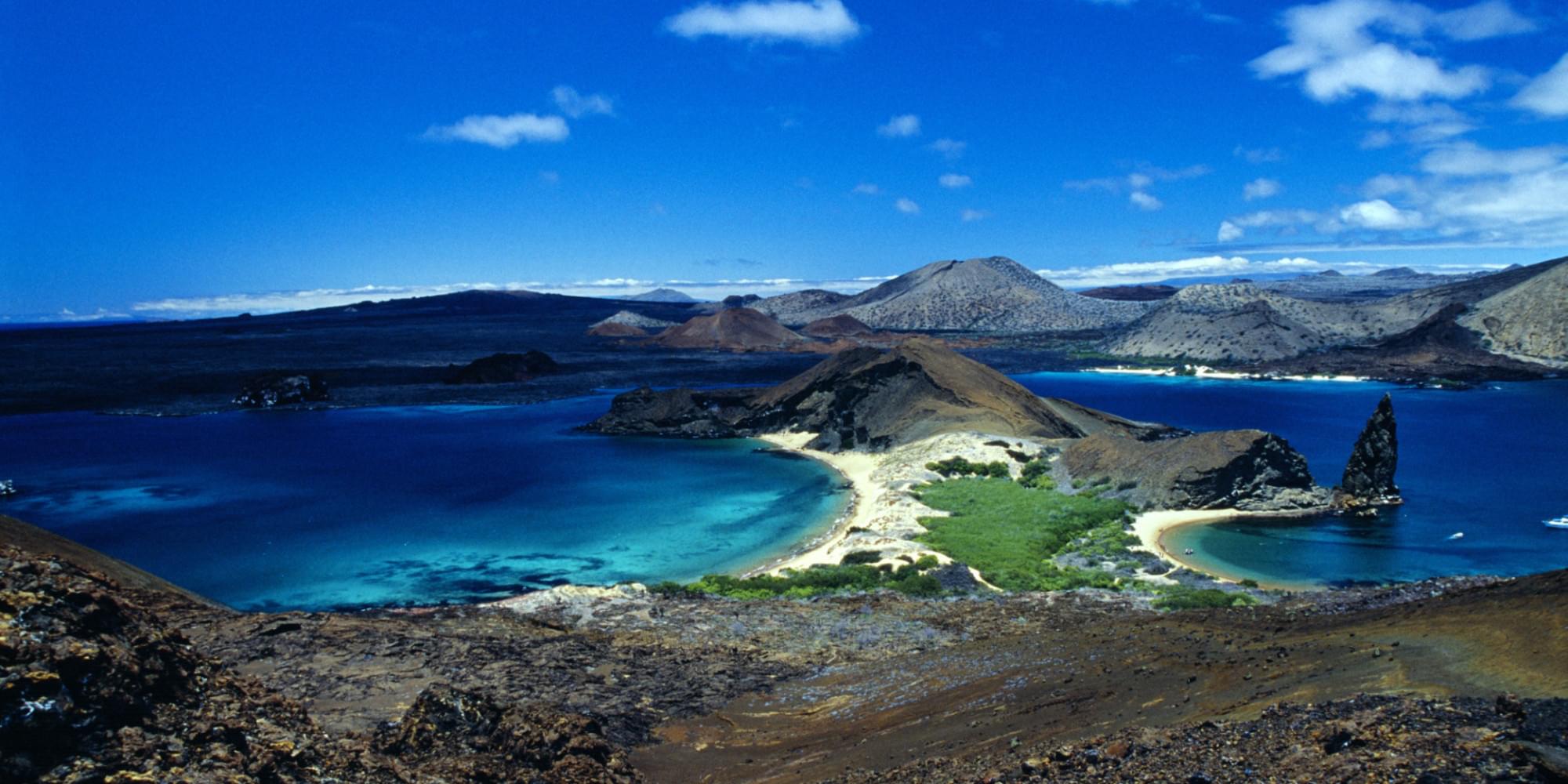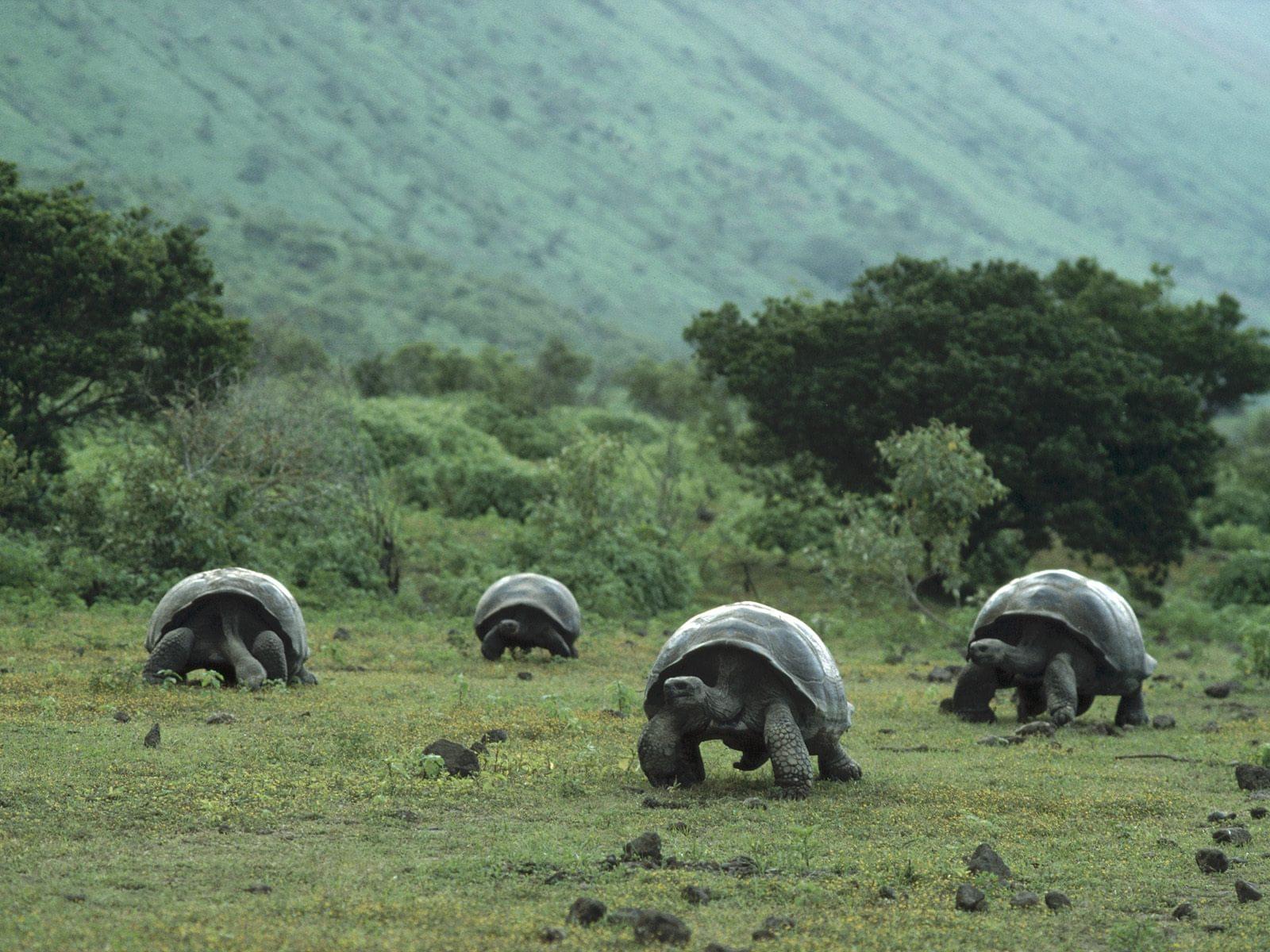
The Galapagos Islands are an archipelago of volcanic islands distributed on both sides of the Pacific equator, with a stretch of 906 km (563 mi) to the west of the continent of South America. The Galapagos Archipelago consists of 13 major islands and 6 small islands, and includes 50,000 square kilometers (19,500 square miles) of ocean. The Galapagos Islands and the surrounding waters form the Ecuadorian Region, the National Park and the Biological Marine Reserve Reserve. The main language of the islands is Spanish. The islands have a population of over 25,000 people. These islands are famous for having the vast number of endemic species that Charles Darwin studied during the voyage from Beagle. His observations contributed to Darwin’s theory beginning to evolve by natural selection.

the climate
The Galapagos Islands are characterized by a highly variable climate, which affects the mainland of Ecuador. There are two seasons in the islands: the hot heat season / rainy season, from December to June, humidity rises and average temperatures reach 80s F (26 ° -30 ° C). From June to November, you can expect cold winds, which sometimes connect with a misty mist type of light called “garúa”. Average temperatures are 70s F (20 ° -24 ° C) during the day and less at night.
Climate fluctuations occur each month uniquely, allowing wildlife to be seen. From December to May it is the best time (high season) to enjoy the tours, when the seas get quieter and the weather gets warmer. But during the summer months in June, July and August they are also very popular and animals are more active. In September to November the season usually drops for most boats to leave the islands dry. The peak period for divers is from July to November with access to Wolf and Darwin.

Climate change as the height increases in the big islands. Temperatures gradually decrease with the rise, while precipitation increases as a result of the condensation of moisture in clouds on the slopes. There is a large range of precipitation from one place to another, not only with altitude, depending on the location of the islands, and also with the seasons.

carrots
Baltra (an airport)
Bartolome
Darwin & Wolf
Espanola
Fernandina
Floreana
Genovesa
Isabela – the largest island
Marchena
North Seymour
Pinta
Pinzon
Rabida
San Cristobal (airport and military base)
Santa Cruz – the island’s main center and population
Santa Fe
Santiago
South Plaza
History of the Galapagos Islands
The first recorded visit to the islands occurred by chance in 1535, when the Bishop of Panama Fray Thomas de Berlanga went to Peru to arbitrate a dispute between Francisco Pesaro and Diego de Almagro. De Berlanga was blown off course, though he eventually returned to the Spanish Empire and described the conditions of the islands and animals that inhabit them. A group of islands has been shown in the Abraham’s Ortelius Atlas published in 1570. The first map of the islands was presented in 1684 by pirate Ambrose Cowley, who named the individual islands after some of his fellow pirates or some of the British royal family and nobles. These names were used in reliable nautical charts from the islands prepared during the Beagle survey under Captain Robert Fitzroy, and in Darwin’s book On his Flight from Beagle. The new Republic of Ecuador took the islands from the Spanish monarchy in 1832, and then gave them the official Spanish names. Old names remained in use in English language publications, including Hermann Melville in Encantadas 1854.
 The Galapagos Islands
The Galapagos Islands
demographics
The Galapagos Islands are one of the few places in the world without an indigenous population. The largest ethnic group consists of Ecuadorian Mestizo, and mixed descendants of Spanish colonists and Native Americans are indigenous, who arrived mainly in the last century from the continental part of Ecuador. There are also a large number of whites, most of whom are Hispanic. There are still some European and American colonists on the islands on the islands.
In 1959, there were approximately 1,000 to 2,000 people on the islands. In 1972 the census was registered in the archipelago with a population of 3, 488, and estimates of the population in 2006 put to about 25,000 people. In 2010 there were 25,124 people in the Galapagos Islands. There are five inhabited islands: Baltra, Floreana, Isabela, San Cristobal, and Santa Cruz.

Travel
Flying options on the Galapagos Islands are limited to two islands. San Cristobal and Baltra. There is a private plane used to reach these islands. Seymour Airport was recently refurbished in (2012-2013) to accommodate large aircraft.
There are wild hotels on the inhabited islands of San Cristobal, Santa Cruz, Floreana and Isabela. Since 2012, more than half of Galapagos’ visitors have made their daily boat trips and staying in small hotels, with dining in restaurants. Tours are still the best way to see all the complex environment and wildlife of the islands.
There are only 116 visitor sites in the Galapagos Islands: 54 land sites and 62 snorkeling or diving sites. Small groups are allowed to visit in 2-4 hours with only shifts, to reduce the impact on the area. Licensed guides are accompanied for each group.
Marine life and animals
Marine environments are very diverse and associated with water temperature systems, reflecting differences in nutrient and light levels. This is a group of warm temperate conditions that bring strong fluctuating waves (tropical equatorial), moderate cool, warm temperate sub-equatorial effect.
Endemic animals are invertebrate species, reptiles and birds. There are a few indigenous mammals. All reptiles, with the exception of two sea turtles, are endemic. These include the giant galapagos tortoise, with 11 breeds on different islands, all of which are endangered, wild duck, marine iguana, and many lizards. Marine animals include several types of sharks, and whales.

Threats
Threats from high levels of poorly organized tourism (the islands welcome about 100,000 visitors a year), overfishing, and the introduction of invasive species that landed on the site on the list of endangered World Heritage in 2007.
But this is first and foremost all of the World Heritage sites that have seen some positive changes in recent years. Ecuador’s progress committee has recognized the promotion of conservation measures aimed at protecting the invaluable region, and Galapagos was removed from the threat list in July 2010.
How to get there
The islands have two airports, Baltra Island and San Cristobal Island, which are served by regular flights from mainland cities Quito and Guayaquil.
How to visit
There are accommodations available on many islands, with boat and general plane services that allow visitors to move towards the archipelago. But perhaps the best way to experience Galapagos is through the boat tour. Whether your interests lie in bird watching, diving, snorkeling, windsurfing, or other activities as an option for the appropriate tour, including his National Geographic.
Galapagos offers unparalleled excursions and tours accessible to anyone. Whether you are on a Galapagos cruise or on a luxury boat, you can go on an inland Galapagos tour, while enjoying all the attractions on these islands.
